Corner cabinets in the kitchen: types and features of choice
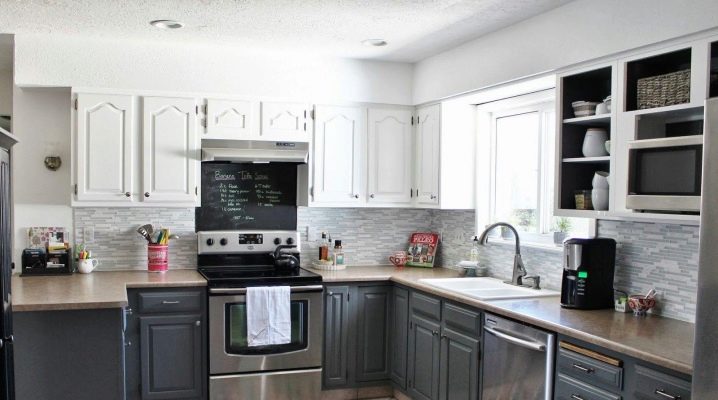
A corner cabinet in the kitchen allows you to use an inconvenient area and create space for storing a large amount of dishes and utensils. If you approach his choice wisely, then, in addition to its functionality, it will delight you with a successful appearance that harmoniously fits into the existing interior.
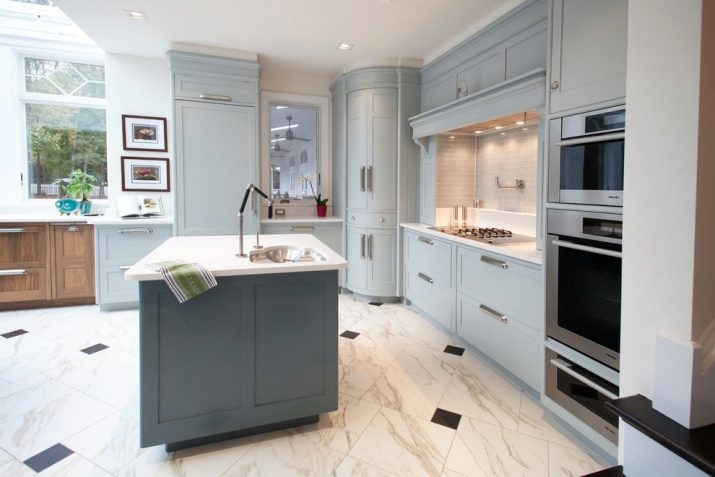
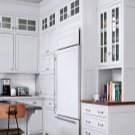

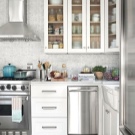
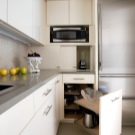
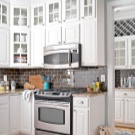
Design features
The corner cabinet in the kitchen differs from other furniture mainly in its usefulness. A corner is an area that is extremely difficult to use in almost any room, but it is a kitchen cabinet that can have such a configuration that it will ideally occupy it. Thus, a fairly large space will be fully utilized. It is customary to place corner cabinets next to the sink, usually directly above it. The design allows you to store a large number of useful things in one place, but at the same time it does not look bulky.
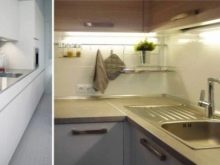
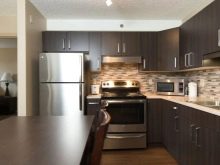
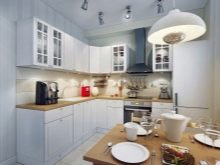
It is customary to equip the hinged modules of corner cabinets with ordinary horizontal shelves, suitable for storing dishes, groceries and other small items. The lower cabinets are complemented by either drawers or a carousel rack. Often the lower section is filled with sink pipes, and therefore the shelves do not fit there. It is possible to mount any household appliances in the floor-standing corner cabinet: a washing machine, a dishwasher or an oven. However, in this case, you should be aware that part of the corner will be unused and free space will be lost.
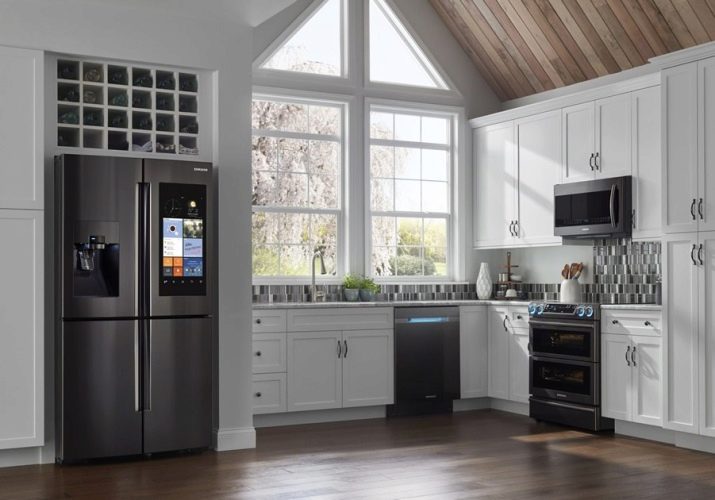
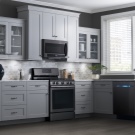
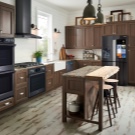
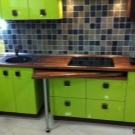
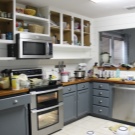

Varieties
In general, there are three characteristics of kitchen cabinets that are relevant for the corner.
- Hanging cabinets - full-fledged designs with a door, most often used for a dryer or for the dishes themselves. Such furniture is attached directly to the ceiling and is comfortable - you just need to reach out to take the necessary item.
- Floor cabinets. In the case of corner ones, this is usually a lower cabinet located under the sink. It is not very convenient to use on a daily basis, but it is great for storing household chemicals, a trash can, or rarely needed items. It is convenient to place bulky dishes on retractable structures.
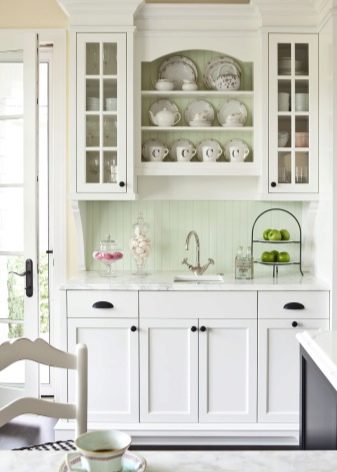

- One-piece cabinet-pencil casewhich will take up the entire space from floor to ceiling. Such tall structures can accommodate a large number of utensils, you can place any equipment in them, but at the same time they "take away" a sufficient amount of free space and look very cumbersome. Therefore, the purchase of corner pencil cases is recommended only for owners of large kitchens. Often, some part of the pencil case (or it completely) becomes a showcase with glass doors, where beautiful dishes or unusual interior compositions are exhibited.
As for materials, it is possible to use wood, and MDF with laminated chipboard, and glass, and even metal.
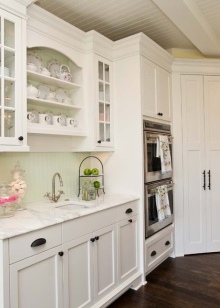
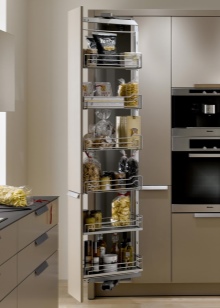
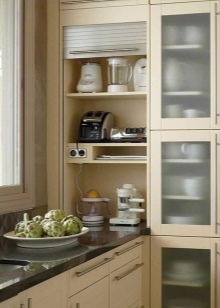
Models
There are many different corner cabinet models. mainly by its shape. The wall cabinet is triangular, trapezoidal, radial and "L" -shaped. The L-shaped structure is very roomy, but not very comfortable thanks to the massive curved door. The solution to the problem in this case can be a double-leaf part. Installation of a triangular cabinet is possible if there are no adjacent sections nearby. This model is not suitable for all designs.
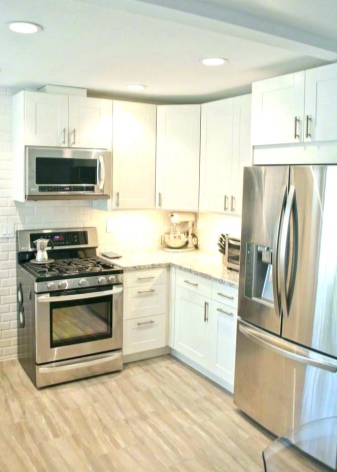
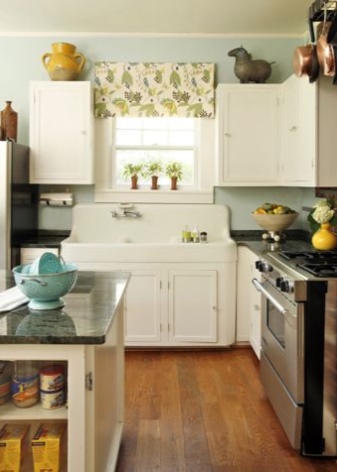
Trapezoidal modules and look beautiful and hold as many items as possible.Unlike the same "L" -shaped, they will look organic, even being the only hinged structure. Radial cabinets are the same trapezoidal ones, but with an original door. As a rule, their cost is higher than that of other models. As for the floor-standing models, their lineup completely repeats the capabilities of the hinged structures.
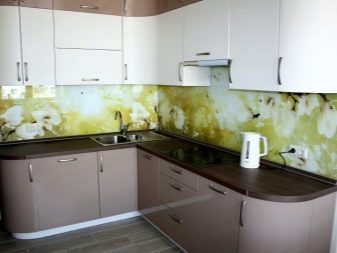
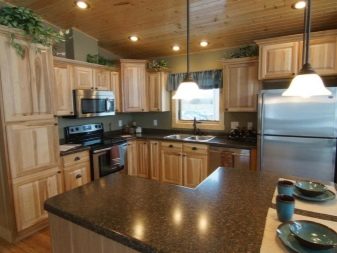
The simplest bottom module is equipped with a pair of horizontal shelves and a trolleybus door. More complex ones have several non-standard drawers or other drawers.
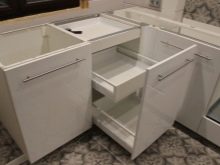
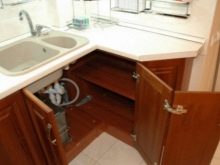
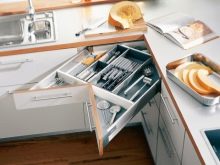
If we consider the samples currently on the market, using the example of the IKEA brand, then it will turn out to find only wall and floor cabinets without solid cases. The upper modules are equipped with simple horizontal shelves, while the lower ones have a convenient pull-out section that makes it easy to access the stored utensils.

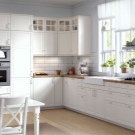
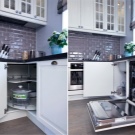
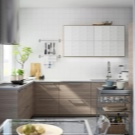
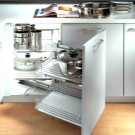
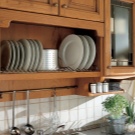
How to choose?
The choice of a corner cabinet is largely based on how it will be used in the future. It is important to understand how many and what items will be placed in the structure, because the thickness of the panels depends on this. Usually, a large number of items correspond to an indicator exceeding 22 millimeters, and for an average amount of stored cargo, 18 millimeters will be sufficient. In the event that additional lighting would not hurt the room, it is worth taking wall cabinets, since it will be possible to equip them with light bulbs.
The size of the corner cabinet is determined depending on the parameters of the room.
It is important to take into account the existing style of other cabinets, as well as the kitchen itself. The bottom floor cabinets have a wall width of 60 to 90 centimeters and a depth of 40 to 60 centimeters. Experts recommend choosing a structure whose depth exceeds 50 centimeters, otherwise its operation will be simply inconvenient (especially in the case of further installation of the sink). The height of the bottom cabinet varies from 75 to 90 centimeters.
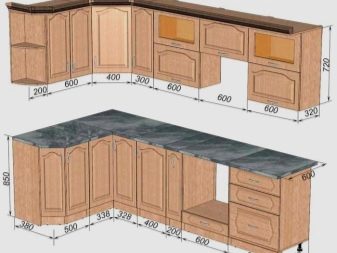
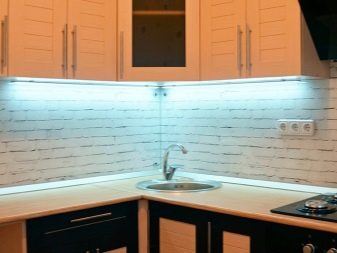
The width of the upper cabinets corresponds to the width of the lower ones, and the depth is halved. The maximum depth of the hinged structure is usually 35 centimeters. The choice of cabinet materials depends on your budget and furniture function. The cheapest will be to use MDF, chipboard and metal, and natural wood and glass are not available for everyone. It is recommended to make glass structures only hinged, and those intended for washing - wooden ones, treated with special means with protection from moisture. In addition, the existing interior design will have to be taken into account.
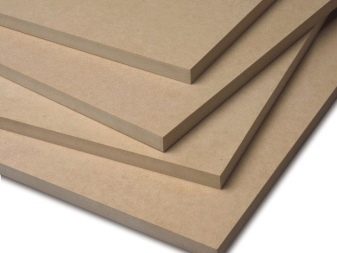
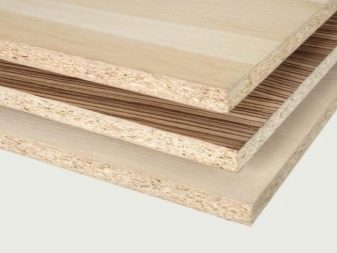
The advantages of chipboard include low cost and the presence of additional protection from film and varnish. However, their operation can be dangerous due to the resulting harmful emissions. MDF is considered a more environmentally friendly material. It allows you not only to experiment with shapes and coatings, but also to make glass or metal inserts. Plates are often covered with plastic sheets with unusual colors.
Fittings suitable for corner cabinets include drawers, mesh baskets, revolving shelves, as well as structures made up of several rectangular drawers fixed to each other by pivoting mechanisms. Sufficient attention has to be paid to door hinges, the opening angle of which cannot be less than 175 degrees.
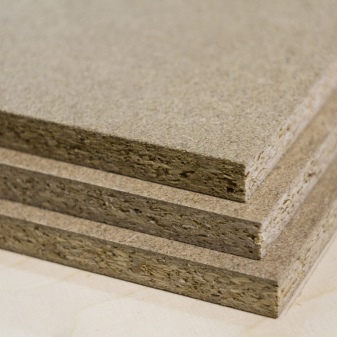
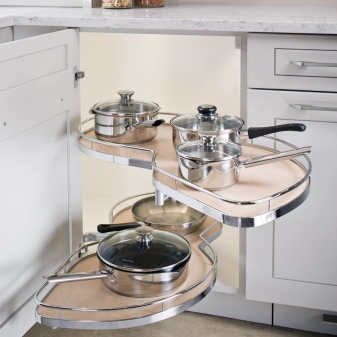
Assembly and installation
Assembling a corner cabinet is not a difficult task.
Ideally, the module should be ordered for a specific situation and must be accompanied by a professionally drawn sketch and design detail.
In the case when the cabinet is created from scratch, it is better to entrust the cutting of parts and lamination of the ends to specialists. For assembly, it will be enough to prepare a screwdriver with two types of drills - for inserting furniture hinges and confirms. For the lower cabinets, you should additionally purchase plastic legs that protect the furniture from moisture and further deformation.
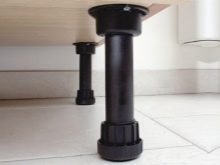
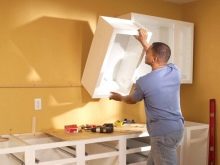

When installing the cabinet in a corner, it is important to ensure that it does not interfere with ventilation, does not interfere with the operation of any other equipment. Any model should fit tightly with straight furniture on both sides. In addition, in the case of a hinged structure, you should not place it so that even some part is above the stove. Since most kitchen furniture today is created using plastic, it will quickly fail if exposed to a constant source of heat and steam. In addition, the calculation should be made on the fact that the wall cabinet will be easy to use, which means that the installation should be carried out depending on the height of the residents living in the apartment.

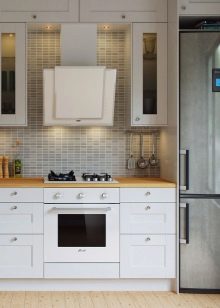
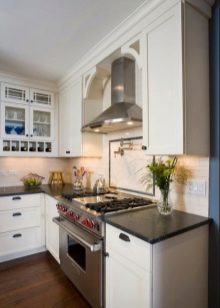
When the kitchen unit is complemented by both upper and lower corner cabinets, the installation takes place from top to bottom. Most often, fasteners are carried out using dowels, which must be ideally matched to the existing structure. Often the cabinet manufacturer leaves recommendations about the types of fasteners - it is better to use them. To prevent the porous wall from cracking, you will have to ensure that the diameter of the drill and the dowel itself have similar dimensions. If you neglect this rule, the result will be an unpleasant crack.
The depth of the hole should always be 2 or 3 millimeters higher than the depth of the fastener itself. If possible, it is worth using the "butterfly" product, which greatly simplifies the installation process.
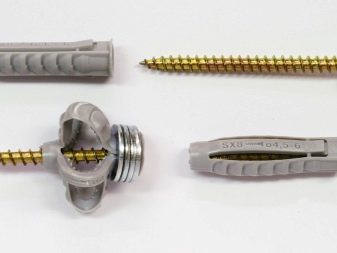
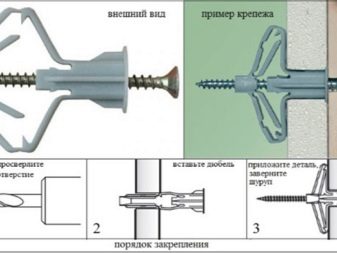
Successful examples
Numerous design solutions make it possible to make corner structures not only stylish, but also multifunctional. For example, if the base cabinet is equipped with triangular drawers, then all the free space will be used to the maximum. Typically, the traditional construction height allows three drawers of slightly different sizes to be accommodated.
For a small kitchen, it is worth purchasing floor cabinets equipped with folding doors or doors, followed by a shelf for storing dishes. By the way, the above two solutions can be combined: the upper part of the floor cabinet will be a shelf with an accordion door, and the lower one will be an angular drawer. As for the color schemes, the preference is given to pastel shades of the cabinets themselves and the dark edging of the countertops.
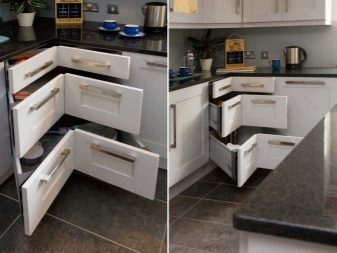
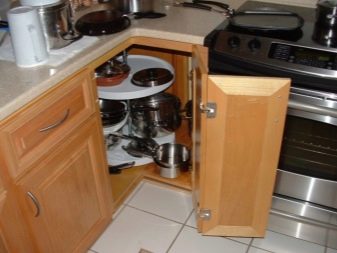
You will learn about the intricacies of self-assembly of corner cabinets from the following video.













The comment was sent successfully.